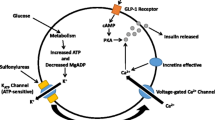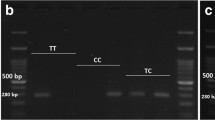Abstract
Scientific pieces of evidence indicate that the polymorphism in the ALR2 regulatory gene favors the susceptibility to diabetic complications (DCs). Previous studies have uncovered several single nucleotide polymorphisms (SNPs) in the ALR2 regulatory sites that negatively modulate the activity of this enzyme and eventually increase the risks of DCs. In view of this, the current study aimed at investigating whether the mutation as a resultant of missense SNPs in the regulatory site of ALR2 enzyme can also hamper the interactions of ALR2 inhibitors with the key amino acid residues in the ALR2 binding site. Around 202 SNPs in the ALR2 gene were reported in the dbSNP database. Out of these, eighteen SNPs that are responsible for point mutations in the regulatory sites of ALR2 enzyme were identified and considered for the study. Identified SNPs were then categorized as stabilizing or destabilizing using various in silico tools and webservers. The resulting mutational constructs of ALR2 were further probed for their influence on the binding affinities and binding modes with well-known ALR2 inhibitors using structure-based analyses. This study identified three destabilizing SNPs, i.e., rs779176563 (C298S), rs1392886142 (G16A), and rs1407261115 (A245T), that lead to the compromised response to most of the ALR2 inhibitors which are in clinical trials. On the other hand, treatment with these ALR2 inhibitors may benefit the population which carries missense SNPs rs748119899, rs1402962430, and rs1467939858 that code for W219S, Q183V, and S214A, respectively. Overall findings of the study suggest that one SNP in the inhibitor site and two SNPs in the co-factor site of ALR2 may be responsible for the low efficacy and unsuccessful journey of ALR2 inhibitors in the clinical trials.
Graphical abstract








Similar content being viewed by others
Data availability
The datasets generated during and/or analyzed during the current study have already been provided as a supplementary data.
Code availability
Not applicable.
References
Ruta L, Magliano D, Lemesurier R, Taylor H, Zimmet P, Shaw J (2013) Prevalence of diabetic retinopathy in type 2 diabetes in developing and developed countries. Diabet Med 30:387–398. https://doi.org/10.1111/dme.12119
Misra A, Gopalan H, Jayawardena R, Hills AP, Soares M, Reza-Albarrán AA et al (2019) Diabetes in developing countries. J diabetes 11:522–39. https://doi.org/10.1111/1753-0407.12913
Matschinsky FM (2005) Glucokinase, glucose homeostasis, and diabetes mellitus. Curr Diab Rep 5:171–176. https://doi.org/10.1007/s11892-005-0005-4
Gerich JE (2010) Role of the kidney in normal glucose homeostasis and in the hyperglycaemia of diabetes mellitus: therapeutic implications. Diabet Med 27:136–42. https://doi.org/10.1111/j.1464-5491.2009.02894.x
Fowler MJ (2008) Microvascular and macrovascular complications of diabetes. Clin diabetes 26:77–82. https://doi.org/10.2337/diaclin.26.2.77
Choudhary S, Kumar M, Silakari O (2021) QM/MM analysis, synthesis and biological evaluation of epalrestat based mutual-prodrugs for diabetic neuropathy and nephropathy. Bioorg Chem 108:104556. https://doi.org/10.1016/j.bioorg.2020.104556
Abbas G, Al-Harrasi AS, Hussain H, Hussain J, Rashid R, Choudhary MI (2016) Antiglycation therapy: discovery of promising antiglycation agents for the management of diabetic complications. Pharm Biol 54:198–206. https://doi.org/10.3109/13880209.2015.1028080
Tanveer A, Akram K, Farooq U, Hayat Z, Shafi A (2017) Management of diabetic complications through fruit flavonoids as a natural remedy. Crit Rev Food Sci Nutr 57:1411–1422. https://doi.org/10.1080/10408398.2014.1000482
Polak M, Newfield R, Fioretto P, Czernichow P, Marchase R (1997) Pathophysiology of diabetic complications. Diabetologia 40:B65–B67
Kinoshita JH (1990) A thirty year journey in the polyol pathway. Exp Eye Res 50:567–573. https://doi.org/10.1016/0014-4835(90)90096-D
Dunlop M (2000) Aldose reductase and the role of the polyol pathway in diabetic nephropathy. Kidney Int 58:S3–S12. https://doi.org/10.1046/j.1523-1755.2000.07702.x
Quattrini L, La Motta C (2019) Aldose reductase inhibitors: 2013-present. Expert Opin Ther Pat 29:199–213. https://doi.org/10.1080/13543776.2019.1582646
Dewanjee S, Das S, Das AK, Bhattacharjee N, Dihingia A, Dua TK et al (2018) Molecular mechanism of diabetic neuropathy and its pharmacotherapeutic targets. Eur J Pharmacol 833:472–523. https://doi.org/10.1016/j.ejphar.2018.06.034
Balasubbu S, Sundaresan P, Rajendran A, Ramasamy K, Govindarajan G, Perumalsamy N et al (2010) Association analysis of nine candidate gene polymorphisms in Indian patients with type 2 diabetic retinopathy. BMC Med Genet 11:1–9. https://doi.org/10.1186/1471-2350-11-158
Wihandani DM, Suastika K, Bagiada INA, Malik SG (2018) Polymorphisms of aldose reductase (ALR2) regulatory gene are risk factors for diabetic retinopathy in type-2 diabetes mellitus patients in Bali Indonesia. Open J Ophthalmol 12:281. https://doi.org/10.2174/1874364101812010281.
Li W, Chen S, Mei Z, Zhao F, Xiang Y (2019) Polymorphisms in sorbitol-aldose reductase (Polyol) pathway genes and their influence on risk of diabetic retinopathy among Han Chinese Medical Science Monitor Int. J Clin Exp Med 25:7073. https://doi.org/10.12659/MSM.917011
Sherry ST, Ward M-H, Kholodov M, Baker J, Phan L, Smigielski EM et al (2001) dbSNP: the NCBI database of genetic variation. Nucleic Acids Res 29:308–311. https://doi.org/10.1093/nar/29.1.308
Vyas B, Singh M, Kaur M, Silakari O, Bahia MS, Singh B (2016) Pharmacophore and docking-based hierarchical virtual screening for the designing of aldose reductase inhibitors: synthesis and biological evaluation. Med Chem Res 25:609–26. https://doi.org/10.1007/s00044-016-1510-5
Vyas B, Choudhary S, Singh PK, Kumar M, Verma H, Singh M et al (2020) Search for non-acidic ALR2 inhibitors: evaluation of flavones as targeted agents for the management of diabetic complications. Bioorg Chem 96:103570. https://doi.org/10.1016/j.bioorg.2020.103570
Meraj K, Mahto MK, Christina NB, Desai N, Shahbazi S, Bhaskar M (2012) Molecular modeling, docking and ADMET studies towards development of novel Disopyramide analogs for potential inhibition of human voltage gated sodium channel proteins. Bioinformation 8:1139. https://doi.org/10.6026/97320630081139
Capriotti E, Fariselli P, Casadio R (2005) I-Mutant2. 0: predicting stability changes upon mutation from the protein sequence or structure. Nucleic Acids Res 33:W306–W10. https://doi.org/10.1093/nar/gki375
Parthiban V, Gromiha MM (2006) Schomburg, D. CUPSAT: prediction of protein stability upon point mutations. Nucleic Acids Res 34:W239–W42. https://doi.org/10.1093/nar/gkl190
Laimer J, Hiebl-Flach J, Lengauer D, Lackner P (2016) MAESTROweb: a web server for structure-based protein stability prediction. Bioinformatics 32:1414–6. https://doi.org/10.1093/bioinformatics/btv769
Rodrigues CH, Pires DE, Ascher DB (2018) DynaMut: predicting the impact of mutations on protein conformation, flexibility and stability. Nucleic Acids Res 46:W350–W355. https://doi.org/10.1093/nar/gky300
Worth CL, Preissner R, Blundell TL (2011) SDM—a server for predicting effects of mutations on protein stability and malfunction. Nucleic Acids Res 39:215–22. https://doi.org/10.1093/nar/gkr363
Yin S, Ding F, Dokholyan NV (2007) Eris: an automated estimator of protein stability. Nat Methods 4:466–467. https://doi.org/10.1038/nmeth0607-466
Pires DE, Ascher DB, Blundell TL (2014) DUET: a server for predicting effects of mutations on protein stability using an integrated computational approach. Nucleic acids Res 42:W314–W319. https://doi.org/10.1093/nar/gku411
Kulshreshtha S, Chaudhary V, Goswami GK, Mathur N (2016) Computational approaches for predicting mutant protein stability. J Comput Aided Mol Des 30:401–412. https://doi.org/10.1007/s10822-016-9914-3
Yin S, Ding F, Dokholyan NV (2007) Modeling backbone flexibility improves protein stability estimation. Structure 15:1567–1576. https://doi.org/10.1016/j.str.2007.09.024
Frappier V, Chartier M, Najmanovich RJ (2015) ENCoM server: exploring protein conformational space and the effect of mutations on protein function and stability. Nucleic Acids Res 43:W395–W400. https://doi.org/10.1093/nar/gkv343
Tedesco G. Comparing ligand and protein electrostatics of Btk inhibitors. Cresset, New Cambridge House, Bassingbourn Road, Litlington, Cambridgeshire, SG8 0SS, UK, pp 1–8. https://www.cresset-group.com/wpcontent/uploads/2017/08/Comparing_ligand-and-protein-electrostatics-of-Btk-inhibitors.pdf
Vyas B, Choudhary S, Singh PK, Singh A, Singh M, Verma H et al (2018) Molecular dynamics/quantum mechanics guided designing of natural products based prodrugs of Epalrestat. J Mol Struct 1171:556–563. https://doi.org/10.1016/j.molstruc.2018.06.030
Kiran G, Karthik L, Devi MS, Sathiyarajeswaran P, Kanakavalli K, Kumar K et al (2020) In silico computational screening of Kabasura Kudineer-official Siddha formulation and JACOM against SARS-CoV-2 spike protein. J Ayurveda Integr Med 13:100324. https://doi.org/10.1016/j.jaim.2020.05.009
Kumar H, Shah A, Sobhia ME (2012) Novel insights into the structural requirements for the design of selective and specific aldose reductase inhibitors. J Mol Model 18:1791–1799. https://doi.org/10.1007/s00894-011-1195-0
Alexiou P, Pegklidou K, Chatzopoulou M, Nicolaou I, Demopoulos VJ (2009) Aldose reductase enzyme and its implication to major health problems of the 21st century. Curr Med Chem 16:734–752. https://doi.org/10.2174/092986709787458362
Singh PK, Mistry KN (2016) A computational approach to determine susceptibility to cancer by evaluating the deleterious effect of nsSNP in XRCC1 gene on binding interaction of XRCC1 protein with ligase III. Gene 576:141–149. https://doi.org/10.1016/j.gene.2015.09.084
Beg MA, Meena LS (2019) Mutational effects on structural stability of SRP pathway dependent co-translational protein ftsY of Mycobacterium tuberculosis H37Rv. Gene Rep 15:100395. https://doi.org/10.1016/j.genrep.2019.100395
Owji H, Eslami M, Nezafat N, Ghasemi Y (2020) In silico elucidation of deleterious non-synonymous SNPs in SHANK3, the autism spectrum disorder gene. J Mol Neurosci 70:1649–1667. https://doi.org/10.1007/s12031-020-01552-5
Pandurangan AP, Ochoa-Montaño B, Ascher DB, Blundell TL (2017) SDM: a server for predicting effects of mutations on protein stability. Nucleic Acids Res 45:W229–W235. https://doi.org/10.1093/nar/gkr363
Michael Gromiha M, Huang LT (2011) Machine learning algorithms for predicting protein folding rates and stability of mutant proteins: comparison with statistical methods. Curr. Protein Pept. Sci. 12:490–502. https://doi.org/10.2174/138920311796957630
Balestri F, Quattrini L, Coviello V, Sartini S, Da Settimo F, Cappiello M et al (2018) Acid derivatives of pyrazolo [1, 5-a] pyrimidine as aldose reductase differential inhibitors. Cell Chem Biol 25(1414–8):e3. https://doi.org/10.1016/j.chembiol.2018.07.008
Kumar M, Choudhary S, Singh PK, Silakari O (2020) Addressing selectivity issues of aldose reductase 2 inhibitors for the management of diabetic complications. F Med. Chem. 12:1327–58
Funding
This study was supported by the Indian Council of Medical Research (ICMR), New Delhi, under sanction no ISRM/11(11)/2019.
Author information
Authors and Affiliations
Contributions
Dr. Bhawna Vyas contributed in conceptualization, material preparation, and data collection and analysis.
Shalki Choudhary contributed in manuscript writing and editing.
Himanshu Verma contributed in some of the in silico part.
Manoj Kumar contributed in some of the in silico part.
Prof. Ashok Kumar Malik contributed in manuscript checking and editing.
Corresponding author
Ethics declarations
Conflict of interest
The authors declare no competing interests.
Additional information
Publisher's note
Springer Nature remains neutral with regard to jurisdictional claims in published maps and institutional affiliations.
Supplementary Information
Below is the link to the electronic supplementary material.
Rights and permissions
Springer Nature or its licensor holds exclusive rights to this article under a publishing agreement with the author(s) or other rightsholder(s); author self-archiving of the accepted manuscript version of this article is solely governed by the terms of such publishing agreement and applicable law.
About this article
Cite this article
Vyas, B., Choudhary, S., Verma, H. et al. Identification of missense SNP-mediated mutations in the regulatory sites of aldose reductase (ALR2) responsible for treatment failure in diabetic complications. J Mol Model 28, 260 (2022). https://doi.org/10.1007/s00894-022-05256-y
Received:
Accepted:
Published:
DOI: https://doi.org/10.1007/s00894-022-05256-y




